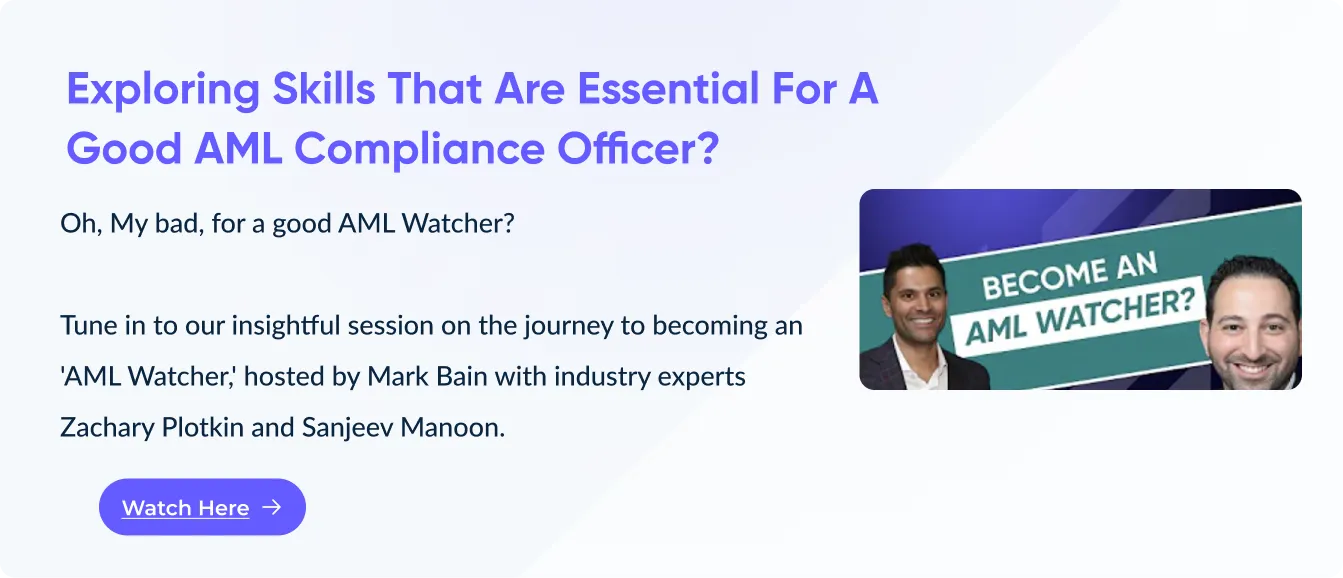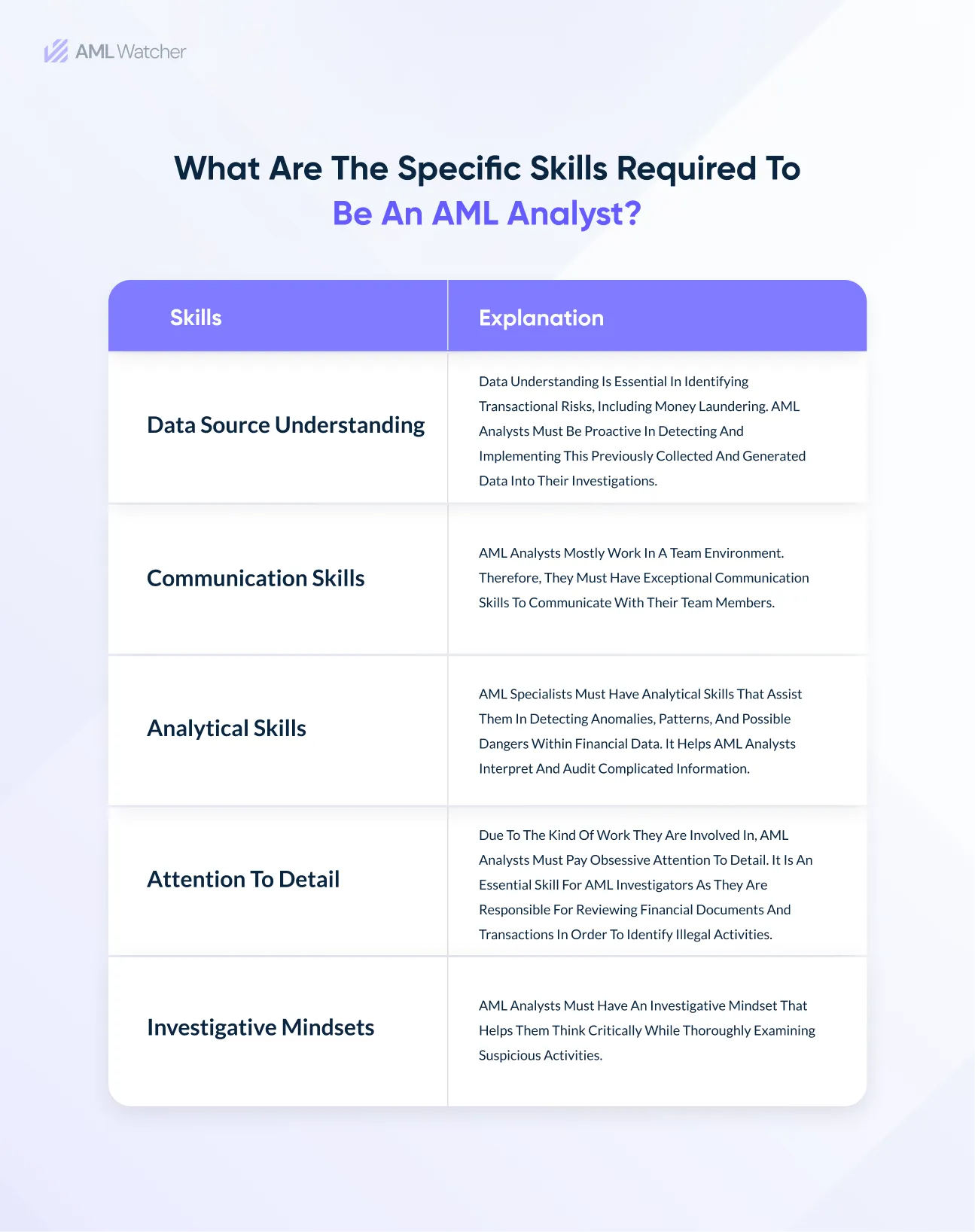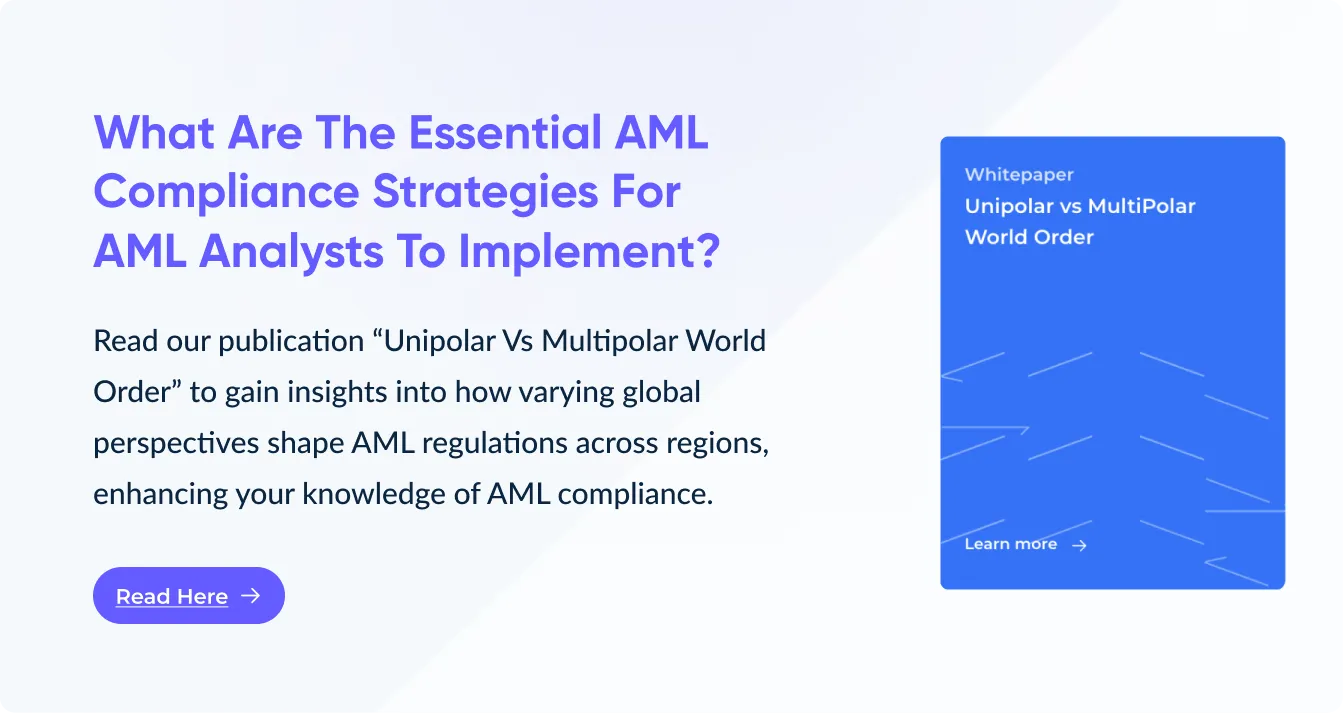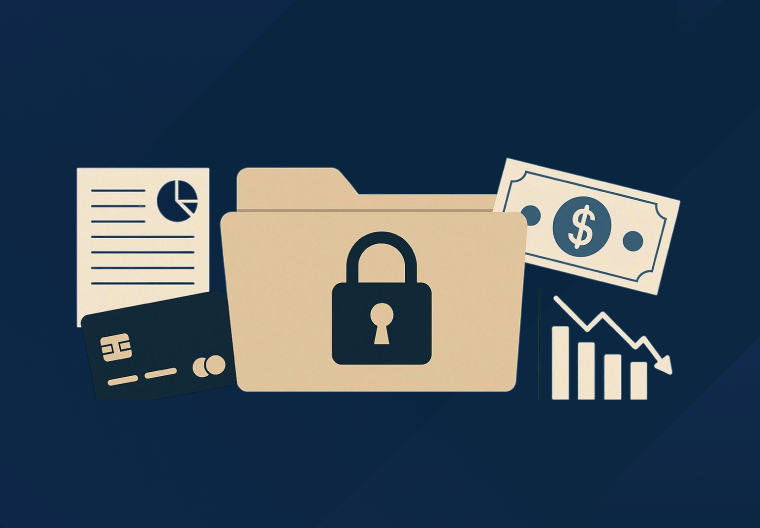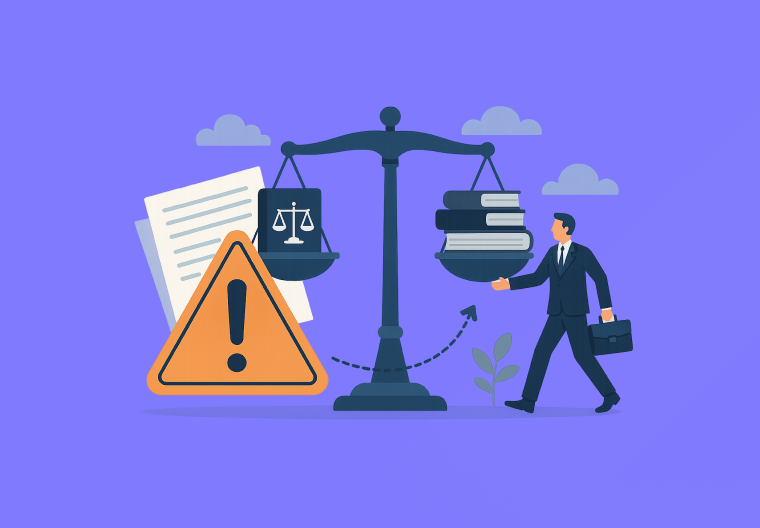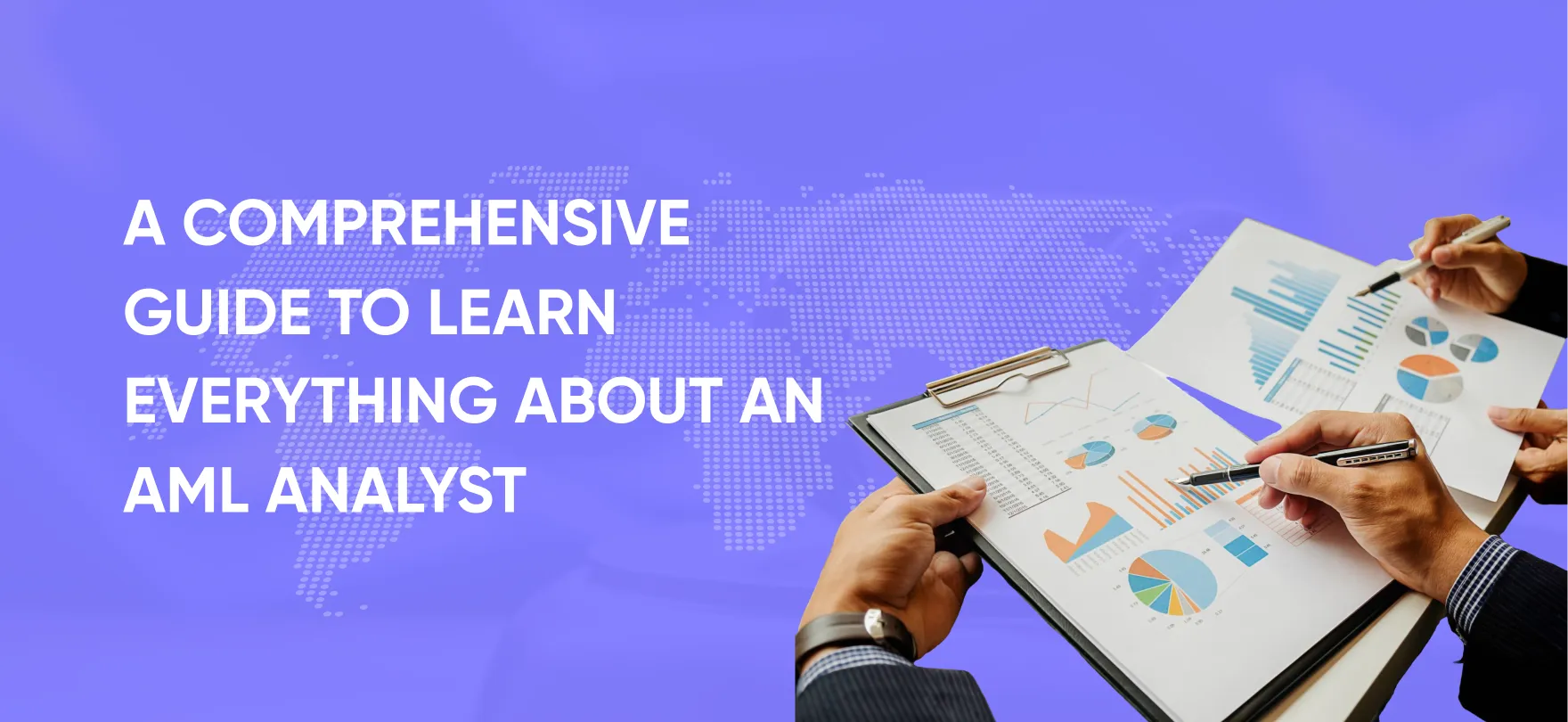
A Comprehensive Guide to Learn Everything About AML Analyst
Think about the financial ecosystem as a complex labyrinth and then the money launderers who are constantly looking for opportunities to fulfill their illicit goals. AML analysts help overcome these illegal activities by playing an essential role in securing economies from the detrimental impacts of illegal money flows.
AML analysts are the frontline defense against financial crimes and money laundering activities as they analyze, monitor, or report illegal financial transactions that improve the integrity of a country’s financial system and prevent fraud.
This blog will shed light on the skills and responsibilities of an AML analyst by providing comprehensive details.
Who is an AML Analyst?
An AML Analyst functions as a liaison between the realms of finance, legal compliance, and investigative practices to reduce money laundering activities.
To ensure efficiency and maintain regulatory compliance, they conduct risk assessment and recognize high-risk customers or transactions in financial organizations, enabling them to analyze the impact of money laundering on a broader scale.
What Does an AML Analyst Do?
AML analysts work closely with law enforcement agencies, compliance officers, and risk analysts to analyze and investigate the critical reasons behind money laundering activities in any institution.
They also need to stay updated with the dynamic regulatory landscape of AML practices by continuously monitoring regulation changes and ensuring that financial institutions remain compliant with industry best practices.
These experts deal with the multifaceted and complex nature of AML compliance, and their core responsibilities include:
1. Risk Assessment
AML analysts identify the leading risk factors to the AML/CFT compliance of their jurisdiction as they have a clear understanding of the business’s risk tolerance, including its geographic location, operations, and AML regulatory requirements.
2. Due Diligence
AML analysts have to dig deeper than any other compliance officer to collect and validate the client credentials and assess their sources of funds and wealth by conducting due diligence for high-risk clients and maintaining the upgraded record of customers.
3. Transaction Monitoring
AML analysts also identify suspicious activities in financial transactions by implementing effective transaction monitoring. These experts specialized in detecting suspicious financial exchanges, increased AML compliance risk, and non-compliant activity.
4. Investigation and Analysis
This stage emphasizes the expertise of AML specialists in assessing and conducting in-depth monetary crime investigations. To perform precise analysis, experts must investigate suspicious activities through continuous monitoring.
5. Reporting and Escalation
AML analysts may need to file suspicious activity reports (SARs) to relevant authorities and maintain a record of all reported incidents. Additionally, they might need to conduct a periodic review of all the reporting procedures.
By following these prerequisites and steps, AML analysts can effectively mitigate money laundering risks and ensure AML regulatory compliance.
The question remains, are there any certain skills required to become an AML Analyst? Find out in the chart below!
Becoming an AML analyst is not an overnight thing. It takes several rounds of challenges to overcome to be labeled as an effective AML analyst that ensures a full grasp of the comprehensive AML/CFT compliance domain. Here are common challenges to be aware of.
5 Major Challenges Faced by AML Analysts and the Best Solutions
AML analysts secure financial organizations and prevent illegal financial activities. To execute this, they have to encounter the following challenges:
1. Adapting To Dynamic Regulations
AML requirements and regulations are subjected to frequent changes at the global level. For instance, during the 2024 elections, there are many chances of changing multiple regulations due to major shifts in the geopolitical domain.
These global power shifts may introduce new AML challenges, increasing the risks associated with politically exposed persons.
Required Action
AML analysts can keep track of changing regulations and adapt to these updated AML compliance standards by using a consolidated AML screening solution. Without an updated AML database, the compliance officers can’t manually manage the evolving demands of evolving regulations.
Therefore, AML analysts must have advanced AML systems or technology to keep up with these dynamic regulations.
2. Reducing False Positives
Sometimes, AML client information validation and name screening generate false positive alerts that require manual review to check their authenticity, resulting in potential delays and increased operational costs while identifying suspicious activities.
Resultantly, money launderers exploit this delay and carry out their illegal intentions.
Required Action
AML analysts can use accurate name matching and AML risk screening features that provide accurate results with reduced occurrence of false positives.
AML screening solutions with comprehensive and reliable databases with global coverage can be the ultimate solution for reduced false positives.
Name-screening solutions help detect high-risk individuals, preventing them from utilizing your institution for illegal financial transfers.
3. Cross-Border Risk Management
Highlighting the differences in AML regulations among different jurisdictions is complicated for multinational organizations. For example, the United States (US) has a higher risk of money laundering activities than China.
Catering to this issue manually is complicated for AML analysts, so they should look for solutions that address their problems automatically at the global level.
Required Action
AML analysts should have access to a solution that provides global risk assessments backed by comprehensive regional plus global databases, thereby enabling region-specific risk insights.
Many AML solution providers do not have data for countries with a population of less than 100,000. However, AML watcher covers the smallest of the region giving you a comprehensive view of potential AML risks across the globe.
4. Dealing With Digital Currency
The emergence of digital currency, including cryptocurrency, has presented new challenges for AML analysts because it facilitates anonymous exchange and allows people to transfer funds without being caught. The anonymous nature of digital assets makes it harder to identify their trace and origin.
Required Action
AML analysts should use advanced screening features such as crypto wallet screening solutions to secure digital currencies emerging or moving into sanctioned wallets to avoid heavy penalties and legal consequences.
Explore how AML Watcher’s newly introduced “Crypto Wallet Screening” feature works!
5. Managing Inadequate Resources
Lack of training and resources (multiple silos, manual labor, and ineffective cross-team communication) lead to inaccurate, ineffective, and non-compliant processes in financial organizations.
Larger firms have more resources to manage AML in-house departments, while smaller organizations have limited resources, and responsibilities fall onto some team members who (at some time) can’t give their maximum productivity.
Required Action
To enhance the efficiency and accuracy of resource management, AML analysts must use advanced screening solutions that regularly update databases to minimize the risk of inaccurate results and reduce reliance on manual processes.
Furthermore, user-friendly solutions can mitigate the impact of limited training and enable analysts to utilize the technology effectively.
We are here to consult you
Switch to AML Watcher today and reduce your current AML cost by 50% - no questions asked.
- Find right product and pricing for your business
- Get your current solution provider audit & minimise your changeover risk
- Gain expert insights with quick response time to your queries
